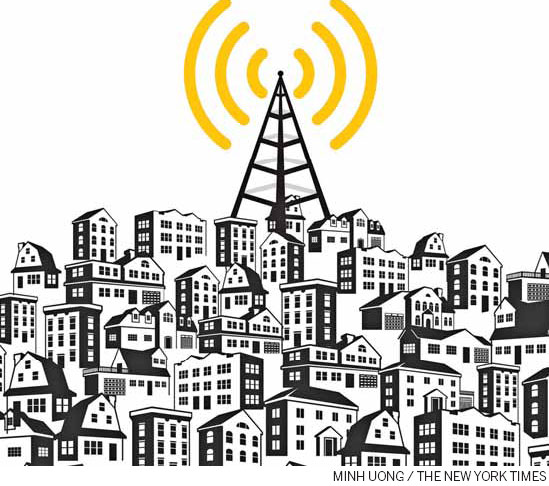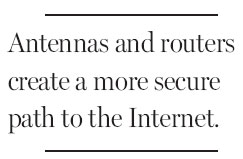A cheaper, more private wireless mesh network
Updated: 2013-12-01 07:19
By Kate Murphy(The New York Times)
|
|||||||
Like most people, Kim Thomas has a broadband connection at home that she uses to check email, surf the Internet and stream music and video.
But unlike most people, Ms. Thomas, 56, a program director for a charitable foundation in Portland, Oregon, has no monthly bill. All she did was buy a router and rooftop antenna for about $150, which gave her free access and made her part owner of the infrastructure that delivers the signal.
Ms. Thomas is a participant in the Personal Telco Project, one of a growing number of community wireless mesh networks. These alternative networks, built and maintained by their users, are emerging at a time when Internet service providers are limited in number and are accused of cooperating with government spies.

"I watch friends who have cable and their bills just keep going up and they have no control but feel they are dependent on it," Ms. Thomas said.
A wireless mesh network is essentially a bunch of interconnected wireless routers, or nodes, which propagate traffic between users and also broadcast broadband service from nodes that are wired to the Internet.
Perhaps the largest and oldest is the Athens Wireless Metropolitan Network, or A.W.M.N., in Greece, which was started in 2002 by people frustrated by the slow rollout of broadband in the city. The network now has more than 2,500 users throughout the metropolitan area and neighboring islands and offers speeds in some areas in excess of 100 megabits per second compared with the 4 to 7 megabits per second from typical residential cable and DSL connections in the United States.
"It's really fast. But it's ended up Internet access doesn't matter for many users because the network has its own services," said Joseph Bonicioli, the volunteer president of the association that oversees A.W.M.N. He said the organization had its own search engines, Voice over Internet Protocol services as well as "forums, social activity and content like video."
Community wireless mesh networks - no one tracks how many there are but it is probably in the thousands worldwide - owe their existence to relatively recent advances in wireless technology. A lot of these innovations actually come from radio astronomy.
"There have been some really incredible breakthroughs in the past 10 years," said Sascha Meinrath, director of the Open Technology Institute, or O.T.I., at the New America Foundation in Washington, which has been the nexus for the wireless mesh networking movement.
In October, O.T.I. released its Commotion Construction Kit, which provides step-by-step instructions on how to set up a wireless mesh network using open source code and off-the-shelf routers and antennas.

The focus of O.T.I., which has received financial support from the United States State Department, has been providing the instruction to people living in repressive nations around the world and to activists in the United States. Because mesh networks are autonomous from the wider Internet, they cannot be shut down by a government. The networks are also harder to surveil because of the way data pinballs unpredictably between nodes without any centralized hub.
"And thus you see the many facets of U.S. government," said Mr. Meinrath. "The reality is that the exact same technology that protects human rights workers and democracy advocates overseas is going to be incredibly useful for preventing domestic snooping."
Of course, once you leave the mesh network's confines and point your browser to Facebook or Google, the protections disappear. You're just as vulnerable to surveillance as anyone else. But increasingly mesh networks are linking directly to the Internet's backbone to achieve greater speed and eliminating middlemen gateways and their restrictions. This is the case for the Freedom Network in Kansas City, Kansas, as well as many European mesh networks including FunkFeuer in Vienna, WirelessAntwerpen in Antwerp and Freifunk in Berlin.
"We are bringing the backbone of the Internet all the way to the home router," said L. Aaron Kaplan, a computer security specialist in Vienna and a co-founder of FunkFeuer. "When there is decentralization of the Internet, it becomes more resilient."
Many mesh networks do not even have written user agreements, though administrators said it was understood that users were not allowed to generate undue traffic or interfere with traffic running through their nodes. To be safe, they suggest members use a virtual private network like WiTopia or VyprVPN on top of the networks' baseline data encryption, which is advisable whenever using Wi-Fi at home or in a public space.
In Portland, Ms. Thomas said she was not concerned. "This is a relationship-driven network where we're all in it for the social experiment more than anything else," she said. "We know there are risks, but we've seen the commercial networks aren't immune to being hacked."
The New York Times
(China Daily 12/01/2013 page11)